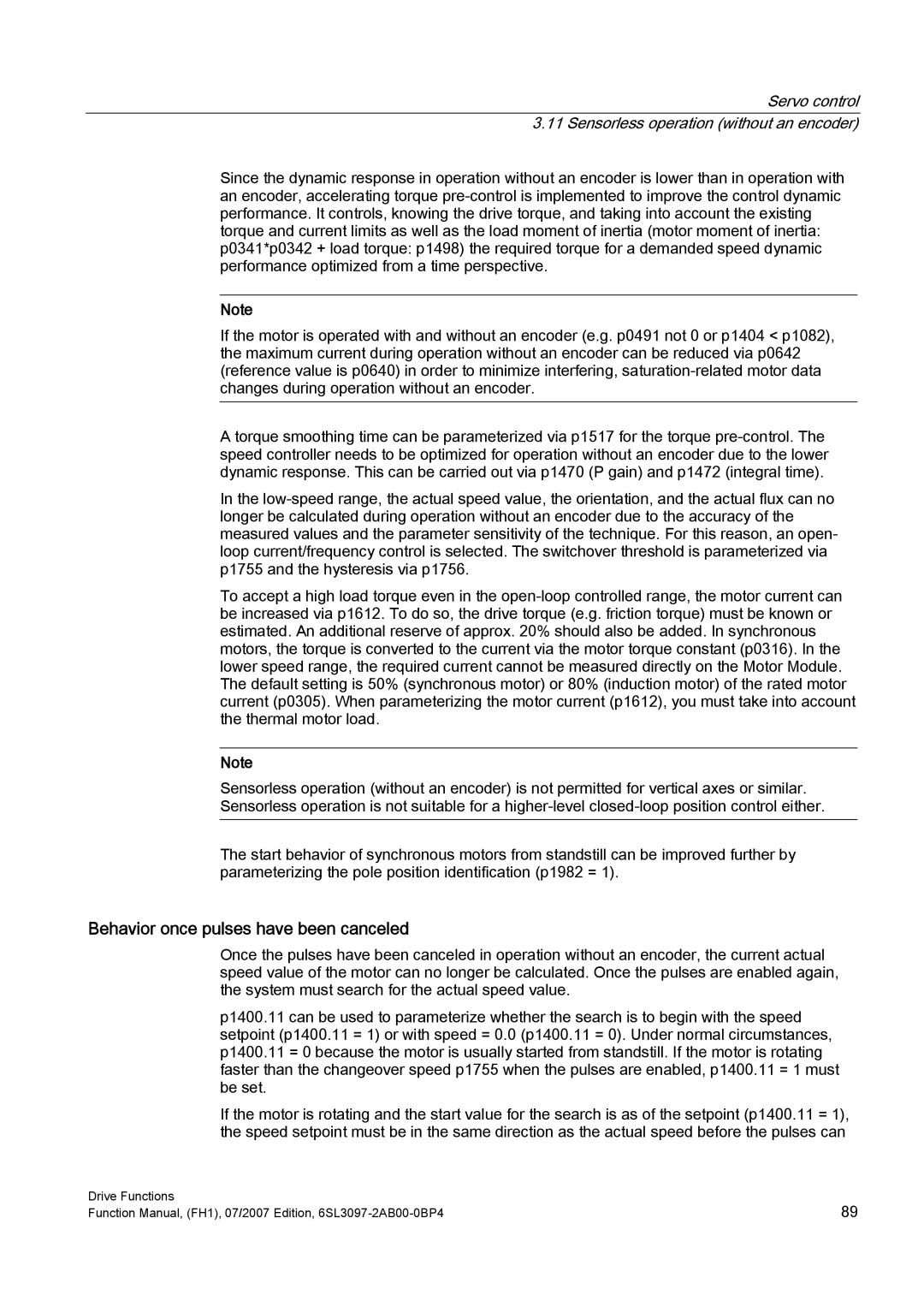
Servo control 3.11 Sensorless operation (without an encoder)
Since the dynamic response in operation without an encoder is lower than in operation with an encoder, accelerating torque
Note
If the motor is operated with and without an encoder (e.g. p0491 not 0 or p1404 < p1082), the maximum current during operation without an encoder can be reduced via p0642 (reference value is p0640) in order to minimize interfering,
A torque smoothing time can be parameterized via p1517 for the torque
In the
To accept a high load torque even in the
Note
Sensorless operation (without an encoder) is not permitted for vertical axes or similar. Sensorless operation is not suitable for a
The start behavior of synchronous motors from standstill can be improved further by parameterizing the pole position identification (p1982 = 1).
Behavior once pulses have been canceled
Once the pulses have been canceled in operation without an encoder, the current actual speed value of the motor can no longer be calculated. Once the pulses are enabled again, the system must search for the actual speed value.
p1400.11 can be used to parameterize whether the search is to begin with the speed setpoint (p1400.11 = 1) or with speed = 0.0 (p1400.11 = 0). Under normal circumstances, p1400.11 = 0 because the motor is usually started from standstill. If the motor is rotating faster than the changeover speed p1755 when the pulses are enabled, p1400.11 = 1 must be set.
If the motor is rotating and the start value for the search is as of the setpoint (p1400.11 = 1), the speed setpoint must be in the same direction as the actual speed before the pulses can
Drive Functions | 89 |
Function Manual, (FH1), 07/2007 Edition, |
